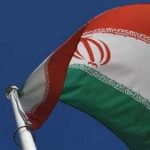This article appeared in The Hill on December 12, 2021. Click here to view the original article.
Finally, the last whimper seems at hand for President Biden’s effort to revive the 2015 Iran nuclear agreement. Inherently flawed, with grievously inadequate verification provisions, and now overtaken by events, the deal’s demise comes not a moment too soon.
We face two closely related, urgent questions: Why has America failed to stop Iran’s nuclear-weapons program? And, with time running out, how does Washington avoid final defeat?
Biden’s advisers, sensing their Holy Grail is unattainable, blame America’s 2018 withdrawal from the Joint Comprehensive Plan of Action (JCPOA), thereby signaling their continuing cluelessness that the deal itself was mistaken, not the withdrawal. The JCPOA was riddled with flaws, but one original sin doomed the entire enterprise to failure. If Biden acknowledged this reality, we might be able to craft a new, broadly agreed U.S. policy. If not, get ready for “Groundhog Day”-style failure.
That central error was allowing Iran any uranium enrichment capability, a bright red line until the Obama administration. In seven resolutions from 2006 to 2010, the United Nations’ Security Council demanded that Iran halt all uranium enrichment, the physical work necessary to raise the concentration of uranium’s fissile isotope, U235, to increasingly higher levels relative to non-fissile U238. (In natural uranium, U235 occurs 0.7 percent of the time, while U238 is 99.3 percent.)
Earlier negotiators, following the Security Council’s resolutions, rejected all Iranian demands to continue enrichment activity. During 2012, however, President Obama bent his knee; the U.S. ultimately accepted Iran’s continued uranium enrichment to reactor-grade levels (3-to-5 percent of U235) if Tehran would stop enrichment to 20 percent (allegedly needed to fuel an aging research reactor). This concession rested on fundamental misperceptions of what varying enrichment levels mean. Obama’s negotiators feared that 20 percent enrichment was too close to weapons-grade levels (typically, 90 percent U235), but asserted that limiting Iran to reactor-grade enrichment would minimize the risks of “breaking out” to nuclear weapons.
This was a critical mistake, one we must not repeat in a post-JCPOA world. Enriching “merely” to reactor-grade levels accomplishes 70 percent of the work required to reach weapons-grade uranium. Enriching from reactor-grade to 20 percent U235 means completing roughly 20 percent of the remaining work to reach weapons-grade levels, by definition, therefore, closer to the danger point.
Far more important, however, and obvious except to Obama’s negotiators, is that 70 percent of the work is greater than 20 percent. If Iran were forbidden to undertake the first 70 percent (i.e., to reactor-grade levels), the subsequent 20 percent would be irrelevant, as would be any higher U235 percentages.
Obama’s negotiators were blind to this point. They thus won a small negotiating victory but lost the diplomatic war. By allowing reactor-grade enrichment, Obama ensured Tehran would always be just baby steps from weapons-grade capabilities, a lethal concession. His negotiators were wholly wrong, moreover, in believing that reactor-grade levels (specifically, 3.5 percent in the JCPOA) were far enough from weapons-grade that monitoring and constraints on production and stockpiling would permit an effective international response before Iran could break out to actual weapons.
But any possibility of restraining Iran by agreement requires effective verification, which the JCPOA never supplied, demonstrated by Iran’s restrictions on International Atomic Energy Agency monitoring. Equally important, the additional time needed to reach weapons-grade levels from 3.5 percent rather than 20 percent enrichment is a matter of weeks, and depends more on the number of centrifuges spinning than the variance between these starting points. Moreover, in negotiating the JCPOA, Obama abandoned efforts to ascertain the “prior military dimensions” of Iran’s nuclear program, contrary to French and other public statements about needing to do just that.
Iran got what it wanted: No real disclosure of its prior military programs, later revealed by a daring Israeli intelligence raid; no effective verification of its JCPOA compliance; and, the jewel in the crown, license to do 70 percent of the work toward weapons-grade uranium.
Looking ahead, Iran will flatly reject any deal not embodying these three points, among others. The inescapable conclusion is that Tehran is so determined to get nuclear weapons, and so practiced in deceit and deception, that the regime cannot be allowed even “peaceful” nuclear programs.
For decades, U.S. presidents have proclaimed it “unacceptable” for Iran to have nuclear weapons. They said the same about North Korea. They largely failed with North Korea, and are poised to fail with Iran, too. Economic sanctions, without more, have failed — and China in particular is poised to buy all the oil Iran can sell, and either veto or ignore future Security Council sanctions.
If a nuclear Iran is truly unacceptable, the only paths open are regime change in Tehran and military/intelligence measures rendering Iran’s nuclear programs harmless. Accordingly, and very late in the day, Washington must decide who will win this contest of wills. Tehran is ahead. Over to you, Mr. President.
John Bolton was national security adviser to President Trump from 2018 to 2019, U.S. ambassador to the United Nations from 2005 to 2006 and held senior State Department posts in 2001-2005 and 1985-1989. His most recent book is “The Room Where It Happened” (2020). He is the founder of John Bolton Super PAC, a political action committee supporting candidates who believe in a strong U.S. foreign policy.
